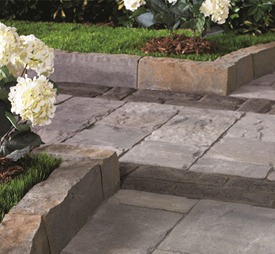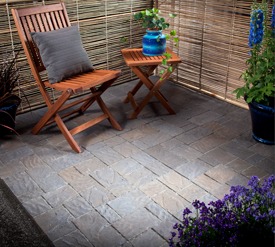Pavers
Permeable Paving
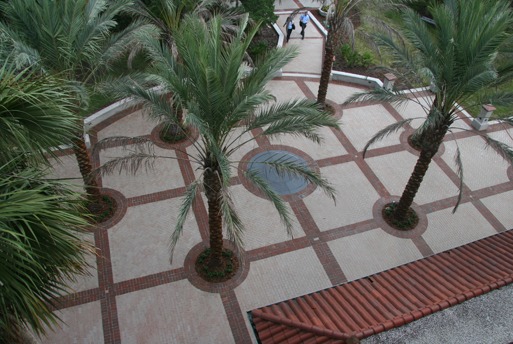
Walk across any number of college campuses, upscale housing developments or downtown historic districts across America, and you’ll see what they have in common: clay brick pavers in plazas, parking lots, sidewalks and streets.
As always, they add to the scene, combining an uncommon durability with a classic aesthetic, providing a permanent, visually pleasing foundation to the surroundings. They’re green, because they’re made of shale and water, which are among the most abundant building materials on the planet; and they last virtually forever – the definition of sustainability.
It’s a story that’s been told for years, and now, there are a few new chapters. These days, the biggest part of that story is permeable paving.
New rules
Increasingly, municipalities are passing ordinances that mandate permeable paving in new construction for a number of reasons. Some are part of an effort to capture rainwater, so that it doesn’t flow into a drainage system that combines raw sewage and stormwater, thus increasing the volume – and the cost – of sewage treatment.
In some urban areas, the ground is so blocked with impervious surfaces, such as roofs and paved sidewalks, parking lots and streets, that permeable paving is seen as one way to help recharge falling water tables.
Permeable paving also lessens water pollution and stream erosion. That’s because in a permeable system, rainwater filters back into the soil, instead of carrying pollutants through storm drains to a nearby stream or river. It works to lessen erosion, because less water flowing into a stream means there is less water to overflow stream banks.
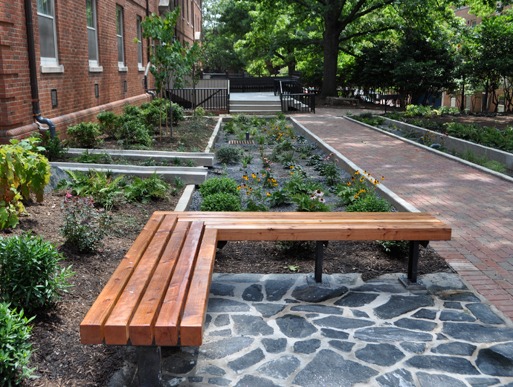
Recent developments in government, coupled with new research, will lead to the use of permeable paving for stormwater management, industry observers say.
This summer, the federal government passed the Surface Transportation Extension Act into law, which, for the first time, includes provisions for permeable paving. Many predict that the seal of approval from the U.S. Department of Transportation will fuel additional development in permeable paving.
Specifically, the law is important in two main ways. The first is that it calls for research into permeable building materials and systems that are designed to minimize environmental impacts, stormwater runoff and flooding; and ways to treat or remove pollutants by allowing stormwater to infiltrate through the pavement similar to the way it would if the pavement was not there.
The second is that it calls for a study into lifecycle costs, which is how much a particular project costs for its entire life. This includes how long a material should last and how much it will cost to maintain.
Both points have been addressed by recent installations of Pine Hall Brick permeable pavers, StormPave, which resembles a classic English-edge paver that’s been installed across the United States for decades.
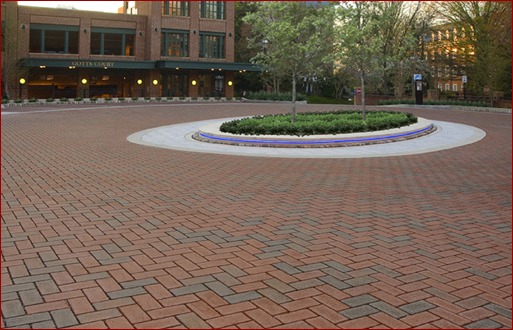
How it works
The pavers work as part of a system: several layers of aggregates without fine particles, installed from largest to gravel-sized, are installed carefully and compacted after excavation. The pavers are placed atop that, and the smallest aggregates are swept into the joints, in place of the customary sand. When it rains, the water flows in between the pavers, where it is stored in the voids between the aggregates beneath, and then seeps into the soil.
The pavement system works, as was shown by how well actual installations in Maryland and North Carolina performed in heavy rainstorms, tropical storms and a hurricane.
In terms of lifecycle costs, clay brick pavers have an effective life of more than a century. Maintenance costs virtually nothing, other than vacuuming debris from between the pavers and replacing inexpensive aggregate stones from time to time. Officials in New Albany, Ohio, installed a StormPave street when they discovered it cost less than a traditional asphalt and storm drain installation, once maintenance costs were included.
In addition, new research has shown that a permeable clay brick paver installation works virtually anywhere.?? In Pine Hall Brick’s home state of North Carolina, new research at North Carolina State University shows that permeable pavement can be used successfully to improve stormwater treatment in most soil types (including clay soils) as long as the paved areas are properly designed, installed and maintained.
When compared to asphalt or concrete, properly used permeable pavements can reduce the volume of stormwater discharged from developed areas by as much as 90 percent. This is important, since sediment carried by stormwater is the state’s No. 1 source of water pollution.
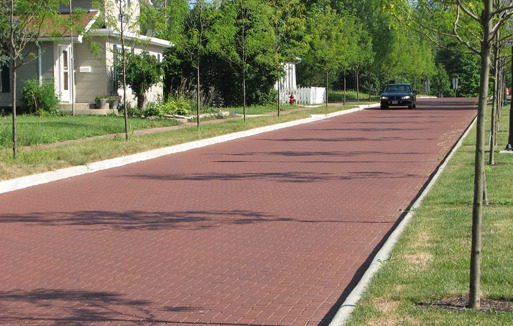
What it means
Taken together, permeable paving is being required by municipalities, has been seen as important by the U.S. Department of Transportation, has been shown to work in real-world installations, and is useful virtually anywhere, as long as it is installed and maintained correctly, according to research. That translates into one word: demand.
Rest assured that clay permeable pavers will be in demand today and tomorrow. Those mason contractors who either learn how to install it themselves, or form partnerships with those who already have the knowhow, will be in a position to add to their bottom lines.
| Paver Innovation |
||||||||
Belgard Hardscapes is offering both a new paver collection and a product for edging paver surfaces for the masonry industry. Anglia Edger is a decorative option for edging paver surfaces that was released regionally in the Northeast, Midwest and West Coast regions in 2011. The Domino Paver Collection was specifically designed to provide a dimensional paver surface with reduced installation time and waste. Since Domino Pavers come in a single shape that can be handled two at a time, less product handling and cutting are needed, resulting in an installation done in a fraction of the time of a three- or four-piece system. Domino Pavers offer the design flexibility of installing in a running bond, herringbone or basket weave pattern, and are an ideal surface for walkways, patios, pool decking and residential driveways. Designed for edging driveways, patios, walkways and creating small planter walls, Anglia Edger offers the look of natural stone without the cost. Anglia features a chiseled finish that emulates hand-hewn stone and is tumbled to look distressed. Available in a variety of color choices and a number of different lengths for flexibility of design, the Anglia Edger is beveled on the ends to allow for creating both curves and angles. The larger scale of the Anglia Edger makes it a cost-effective alternative to mortar-set granite and other natural stone edging, because there are fewer pieces to install and fewer joints. Anglia also can be used to create natural-form steps, because of its height and thickness. For more information visit www.belgard.biz. |
